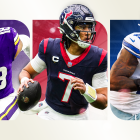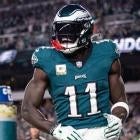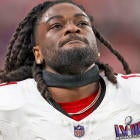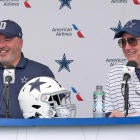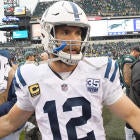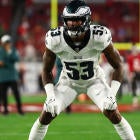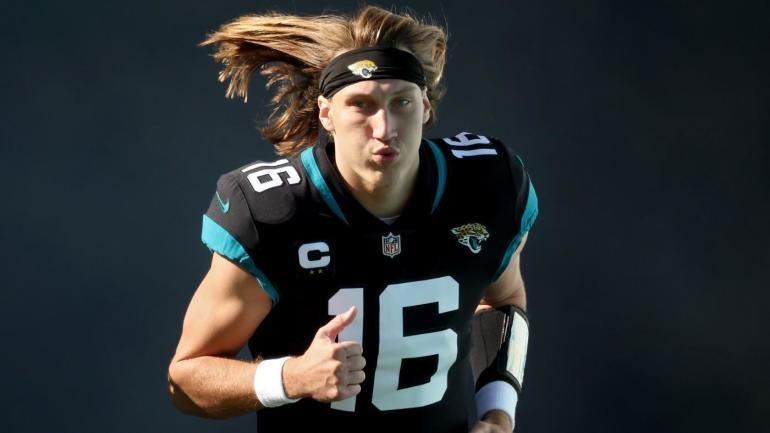
Trevor Lawrence recently became the latest in a long line of quarterbacks to raise eyebrows with a long-term contract extension, securing a $275 million commitment from the Jacksonville Jaguars despite an uneven start to his NFL career. It's par for the course in a league dominated by signal-callers: Even reasonably effective starters are due big bucks as teams fight to maintain continuity under center.
But how does Lawrence's deal truly stack up to other lucrative deals at the position? More broadly, how do today's big-money extensions actually affect the paying teams? Per-year averages are an important figure, but because of the position's ever-inflating market, top-of-the-line deals quickly become outdated. So we're looking instead at the percentage of the annual salary cap that quarterback deals command.
For instance, all teams have a league-designated cap of $255.4 million in 2024, and while the Jaguars just signed Lawrence, the former No. 1 overall draft pick only counts $15 million against the cap in 2024, or roughly 5.9%. That leaves roughly 94% of the cap for other players. In three years, however, Lawrence is owed $35 million in 2027, when he's projected to account for 11% of that year's cap.
Using cap data from both Spotrac and Over the Cap, we've listed the top 15 highest-paid quarterbacks on a per-year basis, plus the average annual percentage of each deal against the projected cap:
Top 15 highest-paid QBs
| QB | Team | Per Year | Avg. % of Salary Cap |
|---|---|---|---|
$55M | 24.5 | ||
Trevor Lawrence | Jaguars | $55M | 21.5 |
$53M | 20.8 | ||
$52.5M | 23.4 | ||
$52M | 23.1 | ||
$51M | 22.7 | ||
$46.1M | 22.1 | ||
$46M | 22.1 | ||
$45M | 17.6 | ||
$45M | 22.7 | ||
$43M | 23.6 | ||
$40M | 19.2 | ||
$40M | 21.9 | ||
$40M | 17.8 | ||
$37.5M | 16.7 |
What can we take away from these numbers, plus more specific windows of projected cap impacts? We've grouped some of the top 15 highest-paid quarterbacks into different categories, according to the results:
Biggest 2024 bargains
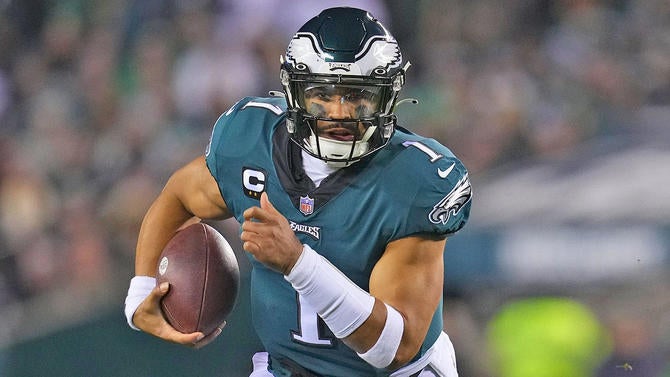
- Jalen Hurts (5.2% of cap): Despite remaining a borderline top-five highest-paid quarterback, the Philadelphia Eagles star won't cost more than $30 million in a season until 2026. Eagles general manager Howie Roseman likes to extend homegrown talent as soon as possible, and this is why.
- Trevor Lawrence (5.6%): It's no surprise Lawrence's finances won't tangibly impact the Jaguars' spending right away, considering he just signed his extension and had two years left on his rookie deal. It's part of the reason Jacksonville still has close to $30 million in cap space for this season.
- Aaron Rodgers (6.6%): Even for a 40-year-old coming off a serious injury, Rodgers is playing at a discounted rate to help facilitate the New York Jets' veteran-heavy playoff hunt. His deal, which runs only through 2025, was even more affordable in 2023, at a reduced $8.8 million cap hit.
Biggest 2024 investments
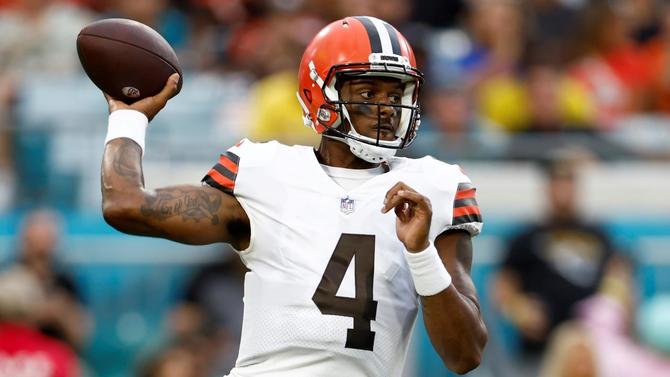
- Deshaun Watson (22.0% of cap): The Cleveland Browns made a historic (and polarizing) commitment to Watson when they guaranteed $230 million to the ex-Houston Texans star in 2022. Now the bill is coming due, as no top-earning quarterback will command more this season.
- Dak Prescott (21.2%): This is what happens when you let a Pro Bowl starter approach a contract year. The Dallas Cowboys may or may not lock Prescott up long-term, but with 2024 representing the last season of his previous extension, Prescott is due $55 million this year alone -- second only to Watson.
- Kyler Murray (18.2%): The Arizona Cardinals bent to Murray's contract demands after his third season, which is why they're now stuck giving him a top-three cap % amid an ongoing rebuild. The former No. 1 pick is looking to play his first full season in four years.
Biggest multi-year bargains
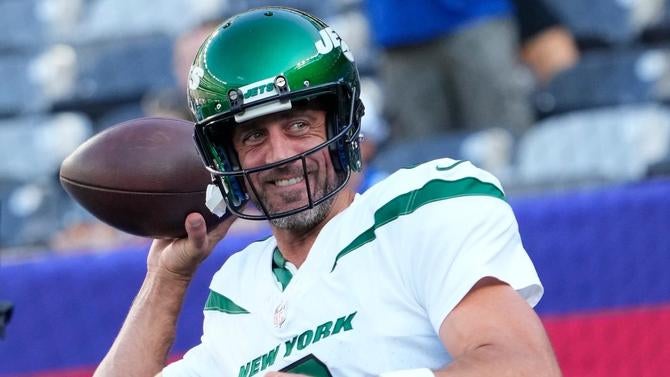
- Rodgers accounts for an average of just 7.8% of the Jets' cap through 2025, or the life of his existing contract with New York. While he carries lots of questions -- age, durability, etc. -- he could prove to be a financial steal if he flashes his vintage self within the Jets' playoff-ready lineup.
- Lawrence may have made headlines with his $55 million per-year haul, but the truth is he only counts an average of 7.9% against the Jaguars' cap through 2027. His $275 million extension is significantly boosted by supersized $75 million+ cap hits on the back end of the deal, in 2028-2029.
- Hurts is entering his fourth year as the Eagles' full-time starter, but his average cap % is just 9.5 through 2027, or the next four seasons. Should he flirt with an MVP nod again, he could be ripe for a renegotiation, presuming the quarterback market continues to rise.
Biggest multi-year investments
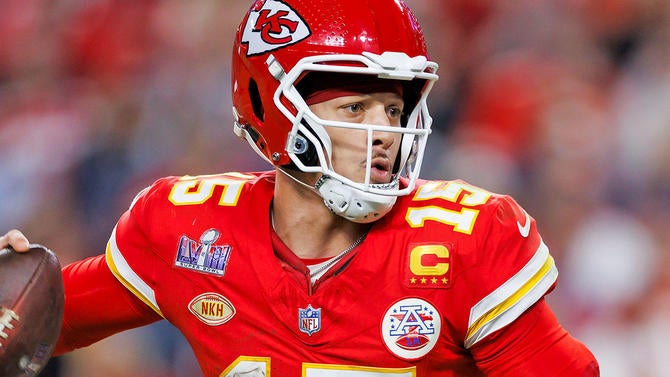
- Watson isn't just a costly figure on the Browns' books in 2024; his deal accounts for an average of 23% per year through 2026, which is the most among all quarterbacks here. In other words, even as the cap rises, Cleveland has committed close to a quarter of its cap to him.
- Patrick Mahomes could reasonably be considered underpaid regardless of his earnings, considering the Hall of Fame-level achievements of the Kansas City Chiefs star. But there's a reason K.C. has turned over his supporting cast: His 10-year, $450 million deal signed back in 2020 accounts for an annual average of 21.3% of the cap through 2027.
- Lamar Jackson just signed his extension prior to 2023, but the Baltimore Ravens standout will count an average of 19.9% against the cap through 2027. That mark is inflated by two $74.7 million cap hits from 2026-2027, which are not guaranteed, making the two-time MVP a renegotiation candidate.
Most team-friendly long-term deals
Note: Nine of the top 15 quarterback deals extend beyond 2027, or the next four years.
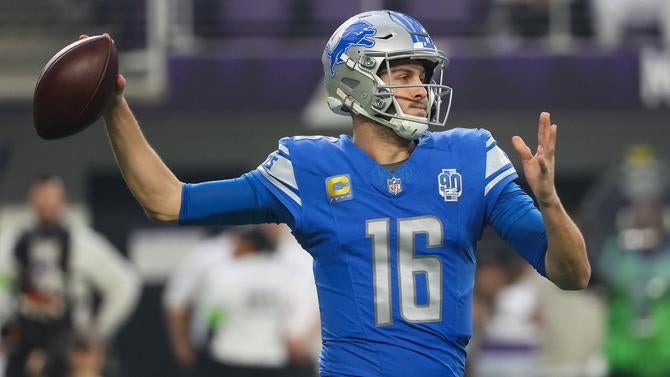
- Jared Goff (20.8% cap average through entire contract): The Detroit Lions paid a pretty penny to reward Goff's post-Los Angeles Rams rejuvenation, but the former No. 1 pick's new deal isn't necessarily cost-prohibitive. Detroit can cut or trade him as soon as 2026 to gain cap savings.
- Lawrence (21.5%), again, is a hot topic for getting such a pricey deal after just three mercurial NFL seasons. But the Jaguars aren't guaranteeing any money in his extension beyond 2027. That essentially gives the 24-year-old four more years -- a new, glorified "rookie deal" -- to prove his worth.
- Murray (22.1%) may cost Arizona a lot right now, at least relative to his production and the team's readiness to contend (or lack thereof). Yet his annual cap hits actually become more affordable after 2026, dipping from $50 million+ to the $40 million range in 2027-2028.
Most expensive long-term deals
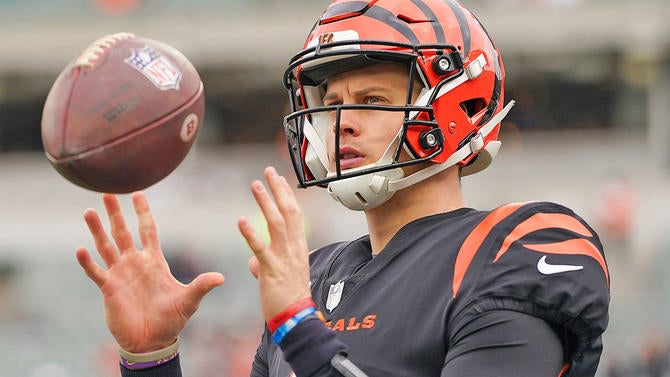
- Joe Burrow (24.5% cap average through entire contract): Among all second-contract quarterbacks with deals extending beyond the next four seasons, Burrow ranks No. 1 in terms of how much his deal impacts the cap. The Cincinnati Bengals star, who's looking to overcome injuries to vie for another Super Bowl appearance, is due at least $46 million in five straight seasons from 2025-2029.
- Josh Allen (23.6%): The Buffalo Bills Pro Bowler doesn't necessarily boast an appropriate per-year salary relative to his MVP-level production, but his 2026-2028 earnings are projected to soar, as he's owed between $48 million and close to $64 million per year during that stretch.
- Justin Herbert (23.4%): The Los Angeles Chargers just got done resetting Herbert's entire skill-group supporting cast, perhaps partly in anticipation of his future price tag. While he's affordable in 2024 (7.4% of the cap, due under $20 million), the former first-rounder has an especially high 2028 cap hit.
In conclusion
Quarterbacks will always be game-changers, both on the field and in the offseason. And, while easier said than done, the key to properly compensating them is doing it at the right time. Ideally, if you're convinced you want to keep your signal-caller, the sooner the extension, the better. The Chiefs and Eagles set good examples here: K.C. acted quickly to extend Mahomes after his first Super Bowl run, and years later, both sides are benefitting; the Chiefs get their legendary leader at a bargain price, yet Mahomes still commands more of his team's cap than most peers. The Eagles, meanwhile, extended Hurts immediately after his own Super Bowl bid, allowing themselves the freedom to spend top dollar elsewhere (see: wide receiver, offensive line) for the foreseeable future. Both cases, of course, involved first acquiring said quarterbacks.
Other clubs have acted quickly, only to seemingly regret it: The Browns, for example, paid a historic price for a perceived upgrade, moving off Baker Mayfield for Watson in 2022, and they continue to champion the latter publicly. Behind the scenes, however, they find their coaching staff and front office indebted to the so-far-fanciful idea of a Watson turnaround, not nearly as able to reward fellow players like Amari Cooper. Still others have avoided some of the headaches altogether, but by continuously throwing darts at the position: Think the San Francisco 49ers, who turned to current starter Brock Purdy, one of the game's top rookie-deal signal-callers, only after dispensing of former Super Bowl starter Jimmy Garoppolo and No. 3 overall draft pick Trey Lance, neither of whom convinced the club for big money in their latter years.
Resetting at the position risks bottoming out, and of course a total loss of job security from the men and women in charge. But sometimes it's a higher-upside alternative than paying for what's known, especially in a market where known commodities are handsomely paid, not so much for their special qualities but their proven ones. In the end, it's a delicate and near-impossible balance of identifying and rewarding star talent at the position, oftentimes as a result of first establishing an agreeable environment for said quarterback. And then comes the hard part of keeping it all together.











